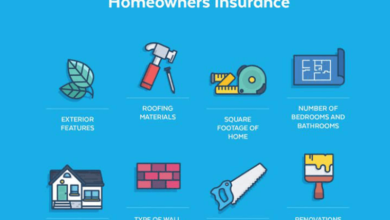5G Networks: Paving the Way for a More Connected World

The advent of 5G networks marks a groundbreaking transformation in the telecommunications industry. As the fifth generation of mobile technology, 5G promises to revolutionize how we connect, communicate, and engage with the world around us. With blazing-fast speeds, ultra-low latency, and massive device connectivity, 5G is poised to unlock unprecedented possibilities across industries. From smart cities to autonomous vehicles, 5G networks are paving the way for a more connected world, driving innovation, economic growth, and societal progress.
The Evolution of Mobile Networks: From 1G to 5G
To understand the significance of 5G networks, it’s essential to take a brief look at the evolution of mobile communication technologies. Each generation of mobile networks has brought about significant advancements in connectivity:
- 1G (First Generation) emerged in the 1980s and was characterized by analog signals, enabling basic voice communication. However, 1G networks were slow and had limited coverage, leading to the development of more advanced technologies.
- 2G (Second Generation), introduced in the 1990s, brought digital communication, allowing for text messages (SMS) and limited data transmission. It was a major leap forward in mobile communication, offering better voice quality and security.
- 3G (Third Generation) revolutionized mobile internet access in the early 2000s, providing the bandwidth necessary for mobile browsing, video calling, and app usage. It marked the beginning of the mobile data revolution.
- 4G (Fourth Generation) arrived in the late 2000s, delivering much faster internet speeds and lower latency. It enabled the rise of smartphones, video streaming, and the proliferation of mobile applications.
Now, 5G (Fifth Generation) is poised to take connectivity to the next level. Unlike its predecessors, 5G isn’t just about faster speeds—it’s about transforming the entire ecosystem of communication and connectivity.
What is 5G? A New Era of Connectivity
5G is the latest generation of wireless technology, designed to provide faster, more reliable internet connections, along with lower latency and the ability to support a vast number of connected devices simultaneously. It operates on a higher frequency spectrum, which allows for significantly faster data transmission compared to 4G networks. The three key features that distinguish 5G from earlier technologies are:
- Enhanced Mobile Broadband (eMBB): 5G offers exponentially faster download and upload speeds, making it ideal for high-definition video streaming, augmented reality (AR), virtual reality (VR), and other bandwidth-heavy applications.
- Ultra-Reliable Low Latency Communication (URLLC): With latency as low as 1 millisecond, 5G enables near-instantaneous communication, critical for applications such as remote surgery, autonomous driving, and industrial automation.
- Massive Machine Type Communication (mMTC): 5G supports the connection of billions of devices, enabling the Internet of Things (IoT) to thrive. From smart homes to connected cities, 5G will facilitate seamless communication between devices on a massive scale.
These characteristics make 5G not only an evolution of mobile networks but also a revolutionary enabler of new technologies and applications.
5G Technology: How It Works
The technological infrastructure behind 5G networks is highly sophisticated, built to handle the demands of a hyper-connected world. 5G operates on three main frequency bands:
- Low-band spectrum: This is the foundation of 5G and covers long distances with reliable connectivity, but it offers lower speeds compared to higher bands. It is ideal for broad geographic coverage.
- Mid-band spectrum: This provides a balance between speed and coverage, making it suitable for urban and suburban areas. It can deliver faster data rates without the limitations of shorter range.
- High-band spectrum: Also known as millimeter-wave (mmWave), this offers ultra-high speeds but has a much shorter range. It’s ideal for dense urban environments, stadiums, and other areas where high-speed connectivity is crucial.
5G networks also employ a technology called massive MIMO (Multiple Input, Multiple Output), which uses multiple antennas to transmit and receive more data simultaneously. This increases capacity and efficiency, allowing for faster speeds and better performance in crowded areas.
The Impact of 5G Across Industries
The rollout of 5G networks will have far-reaching implications across a wide range of industries. Here are some key sectors that stand to benefit the most from 5G:
- Healthcare: 5G will revolutionize healthcare by enabling telemedicine, remote surgeries, and real-time health monitoring. Doctors can perform surgeries from miles away using robotic systems connected to 5G networks, while patients can receive personalized care through connected devices that track vital signs in real time.
- Transportation: Autonomous vehicles will rely heavily on 5G networks for real-time data transmission and communication with other vehicles and infrastructure. The ultra-low latency of 5G is critical for ensuring the safety and efficiency of self-driving cars, enabling them to make split-second decisions.
- Manufacturing: Smart factories powered by 5G will feature connected machines that communicate seamlessly to optimize production processes. This will lead to increased efficiency, reduced downtime, and the ability to implement predictive maintenance strategies.
- Entertainment and Media: 5G will enable the widespread adoption of AR and VR, providing users with immersive experiences in gaming, live events, and virtual tours. It will also facilitate faster downloads and higher-quality video streaming, transforming the way we consume media.
- Agriculture: Farmers can use 5G-enabled IoT devices to monitor soil conditions, track livestock, and optimize irrigation systems. This will lead to increased crop yields and more efficient use of resources, contributing to sustainable agriculture.
- Smart Cities: 5G will be the backbone of smart cities, connecting millions of devices such as traffic lights, security cameras, and environmental sensors. This will enable cities to operate more efficiently, reduce energy consumption, and improve public services.
5G and the Internet of Things (IoT)
One of the most transformative aspects of 5G is its ability to support the Internet of Things (IoT) on a massive scale. IoT refers to the network of physical devices—such as sensors, appliances, and vehicles—that are connected to the internet, allowing them to collect and exchange data. With 5G, the number of connected devices is expected to skyrocket, enabling new applications and services that were previously unimaginable.
In smart homes, 5G-enabled IoT devices will allow homeowners to control everything from lighting to security systems through a single interface. In industrial settings, IoT devices connected to 5G networks will monitor equipment, track inventory, and enhance worker safety. The possibilities are virtually endless, as 5G opens the door to a fully connected, intelligent world.
The Challenges of 5G Deployment
While 5G holds immense potential, there are several challenges that need to be addressed to ensure its successful deployment. These challenges include:
- Infrastructure Investment: Building 5G networks requires significant investment in new infrastructure, including base stations, antennas, and fiber optic cables. The cost of this infrastructure, particularly in rural or less densely populated areas, may hinder the widespread adoption of 5G.
- Spectrum Availability: The availability of spectrum for 5G is a critical factor in its rollout. Governments and regulatory bodies must allocate sufficient spectrum to ensure that 5G networks can operate effectively without interference from other wireless technologies.
- Security Concerns: With more devices connected to the internet than ever before, 5G networks will present new security challenges. Ensuring the privacy and security of data transmitted over 5G will be essential, particularly in sensitive sectors such as healthcare and finance.
- Latency in mmWave: While mmWave offers ultra-fast speeds, its short range and susceptibility to interference from buildings and weather conditions pose challenges for consistent, reliable coverage. This limitation will need to be addressed to fully realize the potential of 5G in urban environments.
Global 5G Rollout: Progress and Future Prospects
The global rollout of 5G networks is already underway, with many countries launching commercial 5G services. South Korea, the United States, China, and several European countries have been at the forefront of 5G deployment, with widespread coverage in major cities.
Looking ahead, the expansion of 5G into rural areas and developing countries will be crucial for achieving global connectivity. The potential for 5G to bridge the digital divide is immense, offering internet access to underserved communities and enabling them to participate in the digital economy.
The Role of 5G in Shaping the Future
As 5G networks continue to expand, their impact on the global economy and society will become increasingly profound. According to industry analysts, 5G is expected to contribute trillions of dollars to the global economy by 2035, creating new jobs, industries, and business opportunities.
Moreover, 5G will be a key enabler of future technologies, including artificial intelligence (AI), edge computing, and quantum computing. By providing the high-speed, low-latency connectivity necessary for these technologies to thrive, 5G will drive innovation and shape the future in ways we are only beginning to imagine.
FAQs About 5G Networks
- What makes 5G faster than 4G?
5G operates on higher frequency bands (millimeter waves) and uses advanced technologies like massive MIMO, which allows for greater bandwidth and more efficient use of the spectrum, resulting in faster data speeds. - Will 5G replace Wi-Fi?
While 5G offers faster speeds and more reliable connections, Wi-Fi will continue to play a role in homes and businesses. 5G and Wi-Fi will complement each other, - What devices are compatible with 5G?
Most new smartphones and tablets are being designed with 5G compatibility. Additionally, 5G is expected to power a wide range of devices, from autonomous vehicles to IoT devices used in smart cities and industries. - How will 5G affect data consumption?
With faster speeds and more connected devices, data consumption is expected to increase significantly with 5G. Mobile carriers are likely to offer new data plans to accommodate this demand.
Conclusion
5G networks are laying the foundation for a more connected, intelligent, and efficient world. With their ability to deliver faster speeds, lower latency, and massive connectivity, 5G networks are set to transform industries, enhance daily life, and unlock new possibilities in areas like healthcare, transportation, and smart cities. As the global rollout continues, the future of connectivity looks brighter than ever, with 5G at the forefront of the next technological revolution.





